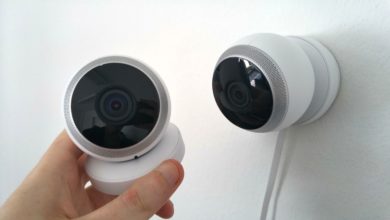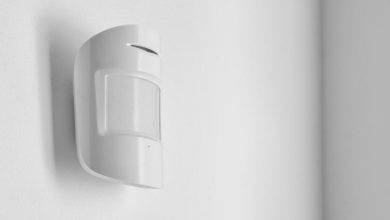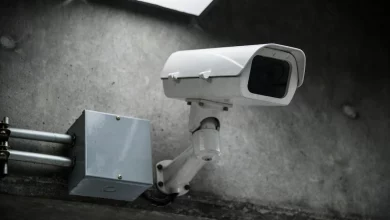Maximizing Home Safety: The Role of Smart Thermostats in HVAC Efficiency
KEY TAKEAWAYS
Smart thermostats, also known as Wi-Fi thermostats, are intelligent devices that can connect your HVAC system to the internet for convenient remote monitoring and temperature control. Unlike traditional programmable thermostats, smart thermostats from brands like Viconics, Braeburn, and Danfoss allow you to control the heating and cooling in your home using mobile apps to achieve substantial energy savings and ensure constant comfort.
The use of smart thermostats eliminates the guesswork from HVAC management, allowing you to schedule customized temperature profiles, adjust settings remotely, or automatically detect occupancy using sensors. They can reduce unnecessary heating and cooling when you are away from home or sleeping by up to 30% compared to a standard, unconnected thermostat. The potential energy savings add up to hundreds per year for the average home.
Overall, smart thermostats offer innovative, internet-connected solutions for gaining more control over the temperature in your home. Viconics, Braeburn, and Danfoss produce reliable, full-featured Wi-Fi thermostats to help significantly cut HVAC energy usage through scheduling, remote access, and occupancy detection features that provide optimal heating and cooling at all times. Installing one of these smart thermostats allows you to save money and upgrade to a more automated, connected home.
Scheduling and temperature control
The advanced scheduling features of smart thermostats like the Viconics vZone, Braeburn Premier, and Danfoss Smart series allow you to program customized temperature profiles for maximizing HVAC efficiency. You can easily set different heating and cooling schedules for the times you are away at work versus relaxing at home in the evenings and nights. Thermostats connect to temperature sensors located in key areas or linked to air vents in multiple rooms to maintain the most precise, uniform temperature control throughout your living space.
For example, you can program a lower setback temperature range from 8 am to 5 pm on weekdays when you are typically away. Then have the thermostat automatically increase to a comfortable yet energy-efficient temperature for the evening hours when home. At night, lower the temperature again slightly for maximum savings during sleeping hours. Instead of running at a constant 68-72 F all day and night, these customized schedules can reduce HVAC runtimes by up to 30% with virtually no impact on comfort.
Some smart thermostats also allow for even more advanced, customized temperature control using smartphone location, local weather data, or integrations with other smart home devices. For instance, raise the temperature when your phone GPS detects you are approaching home or turn on a connected air purifier during high-allergy days. With multiple sensors in each room, the thermostats ensure balanced temperatures throughout the house for the best whole-home efficiency. The thermostats monitor temperature changes across multiple zones, and as a result, can proactively make small adjustments to reach the desired temperature in each zone.
The advanced scheduling and precision temperature control capabilities of smart thermostats can decrease HVAC energy usage by an average of 10-30% per year. The resulting cost savings will depend on factors like your home size, climate zone, and utility rates but can amount to $100 or more annually in reduced heating and cooling costs for a typical house. By installing a smart thermostat, you gain convenient yet customized management of your HVAC system for peak efficiency.
Remote access and monitoring
The remote access capabilities of smart thermostats like the Viconics vZone and Braeburn Premier provide convenient control and monitoring of your HVAC system from anywhere using mobile apps. Whether away at work, on vacation, or simply out running errands, you can quickly check the temperature in your home or make adjustments to your schedule and settings directly through the thermostat control panel on your smartphone. For instance, if there are more people in your home than usual for a special event, you can easily increase the temperature from your office or the gym to ensure maximum comfort for your guests. Reduce it again once the activities are over for efficiency savings. The remote alerts provided by most smart thermostats also notify you immediately if there are any issues with your HVAC equipment or if the inside temperature goes outside your programmed range. This allows you to take quick action by either adjusting the thermostat remotely or by calling a service technician to avoid wasted energy or uncomfortable conditions in the home. When leaving for vacation or out of town, smart thermostats provide full remote access for either scheduling an efficient setback mode or maintaining a comfortable normal temperature as needed. For example, you can program Viconics thermostats to switch to an energy-saving mode by selecting a vacation setting that lowers the temperature by up to 8 degrees while you are away. Then simply return it to your usual schedule well in advance of coming back home. Alternatively, if having guests or renting your space during travel, you can keep the thermostat at a comfortable temperature and make any needed adjustments remotely. In general, smart thermostats offer convenience and the possibility of saving homeowners money on their energy bills. With their mobile apps and notifications, Viconics and Braeburn thermostats provide total control and monitoring of your HVAC system from anywhere for streamlined management and maximum efficiency whether home or away.
Occupancy detection
Some smart thermostats like select Danfoss models are equipped with occupancy detection using built-in sensors, Wi-Fi connectivity, or smartphone location services to automatically activate energy-saving settings when you leave the home. These occupancy features help ensure heating and cooling runtimes correspond to your actual presence and usage patterns for maximum efficiency without compromising comfort. For example, thermostats with integrated occupancy sensors like Danfoss thermostats can detect when you leave for work in the morning, and automatically switch to a setback mode that lowers the temperature by several degrees to reduce HVAC usage. Specifying an unoccupied setback range of around 8 degrees from your normal temperature setting for a Danfoss thermostat can decrease heating usage by up to 15% when you are away from home. The potential savings will depend on how long you are gone and factors like outdoor temperature and climate zone. However, they can amount to 5-15% or more off your annual utility costs. Certain smart thermostats can detect when you leave the house and adjust to a more efficient setback temperature, which can result in meaningful cost and energy savings throughout the year. Select Danfoss models and other brands with occupancy detection capabilities. These models offer a convenient, automated solution for maximizing HVAC efficiency based on your unique schedule and needs. Overall, occupancy features provide an automated way to save energy without sacrificing comfort at home.
Conclusion
The smart thermostat offers an innovative means of controlling and maximizing the efficiency of your HVAC system. Through features like scheduling, remote access, and occupancy detection, wi-fi thermostats can significantly decrease home heating and cooling costs by reducing runtimes for unoccupied periods and customizing operations based on your unique needs and schedule. By installing a smart thermostat from a reputable brand like Viconics, Braeburn, or Danfoss, you can achieve energy savings of 10-30% per year. In addition, you can reduce utility bills for the average home.





